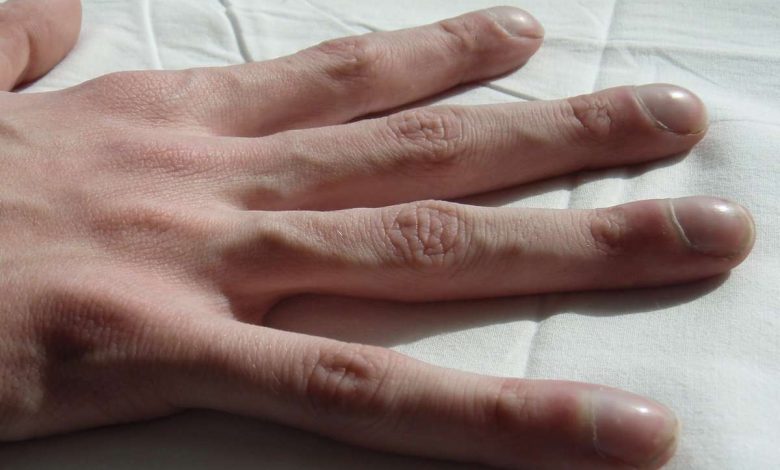Drum sticks symptom, drum fingers: what is this, causes, symptoms, diagnostics, treatment, prevention

Clubbing of the fingers or toes; Clubbing
Thickening of fingers or toes, also known as drum fingers or Hippocratic fingers, represents a state, in which the ends of the fingers or toes are enlarged and rounded due to the growth of soft tissues under the nails. It is usually caused by changes in the skin., bones or underlying tissues of the affected part. It is important to note, that the condition does not usually cause pain or physical discomfort, but may be a symptom of a serious underlying disease.
Causes of thickened fingers or toes
The exact cause of bruised fingers or toes is not fully understood.. However, it is considered, What does this have to do with skin changes?, bones or underlying tissues of the affected part. Common causes may include:
- Inflammatory condition, such as chronic obstructive pulmonary disease (COPD) and cystic fibrosis.
- Cardiovascular diseases, such as congestive heart failure and pulmonary hypertension.
- Liver disease, such as cirrhosis.
- Lung disease, such as bronchiectasis and pulmonary fibrosis.
- Kidney, such as polycystic kidney disease and glomerulonephritis.
- Malignancies, such as lung cancer and stomach cancer.
- Infection, such as HIV, tuberculosis and pneumocystosis.
- Metabolic disorders, such as hyperthyroidism and hypothyroidism.
- endocrine disorders, such as hyperparathyroidism and acromegaly.
- Genetic disorders, such as Marfan syndrome and alpha-1 antitrypsin deficiency.
Symptoms of tympanic fingers or toes
The most common symptom of thickened fingers or toes is enlargement of the distal part of the nail., which resembles the shape of a mace. Other signs and symptoms may include:
- Softening of the nail plate
- Nail color changes
- Changes in the shape of the nail
- Increased warmth of the fingertips
- Loss of normal angle between finger and nail
- Thickening of the skin around the nail
- Swelling and soreness of the fingertips
When to contact a healthcare professional
If you notice any signs or symptoms of thickened fingers or toes, it is important to see a doctor. The doctor can determine the cause and recommend a course of treatment. In some cases, additional tests may be needed to determine the underlying cause.
Questions, that your doctor may ask
Your doctor will take a detailed medical history and ask you a series of questions, to diagnose. Some of the questions may include:
- What symptoms do you have?
- How long have you had symptoms?
- What other diseases do you have?
- Are you taking any medication?
- Has there been a history of thickened fingers or toes in your family??
- Have you been exposed to any infections or toxins?
- You smoke or drink alcohol?
Diagnosis of bruised fingers or toes
The diagnosis of thickened fingers or toes is usually based on a physical examination.. The doctor may also order a number of tests., to rule out any underlying disease, such as x-ray, computed tomography and blood tests.
Treatment of tympanic fingers or toes
Treatment for thickened fingers or toes depends on the underlying cause.. If it is caused by an underlying disease, treatment will focus on managing the condition. For Example, chemotherapy can be used to treat cancer, and drugs can be prescribed to treat inflammation. If there is no underlying reason, treatment may include physical therapy or splinting of the affected finger or toe.
Home treatment for tympanic fingers or toes
If you have been diagnosed with a deformity of your fingers or toes, you can do a few things at home, to deal with this condition.
- Keep your hands and feet clean and dry, to prevent infection.
- Wear gloves or closed shoes, when you are doing activities, which can lead to injury.
- Apply moisturizing lotion to hands and feet, so they don't dry out.
- Protect your hands and feet from extreme temperatures.
- Wear comfortable shoes with good support.
- Avoid actions, that cause a lot of stress on the fingers or toes.
Prevention of bruised fingers or toes
Tympanic fingers or toes are usually caused by an underlying medical condition.. Therefore, it is important to take steps to treat any existing diseases.. This includes taking medications as prescribed., smoking cessation, maintaining a healthy weight, a balanced diet, regular exercise and regular check-ups with a doctor.
Used sources and literature
Drake WM, Chowdhury TA. General patient examination and differential diagnosis. In: Glynn M, Drake WM, eds. Hutchison’s Clinical Methods. 24th ed. Philadelphia, PA: Elsevier; 2018:chap 2.
Fajardo E, Davis JL. History and physical examination. In: Broaddus VC, Serious JD, King TE, Lazarus SC, Sarmiento KF, Snap LM, Stapleton RD, eds. Murray and Nadel’s Textbook of Respiratory Medicine. 7th ed. Philadelphia, PA: Elsevier; 2022:chap 18.
Kliegman RM, St. Geme JW, Bloom NJ, Shah SS, Tasker RC, Wilson KM. Cyanotic congenital heart lesions: lesions associated with decreased pulmonary blood flow. In: Kliegman RM, St. Geme JW, Bloom NJ, Shah SS, Tasker RC, Wilson KM, eds. Nelson Textbook of Pediatrics. 21st ed. Philadelphia, PA: Elsevier; 2020:chap 457.
